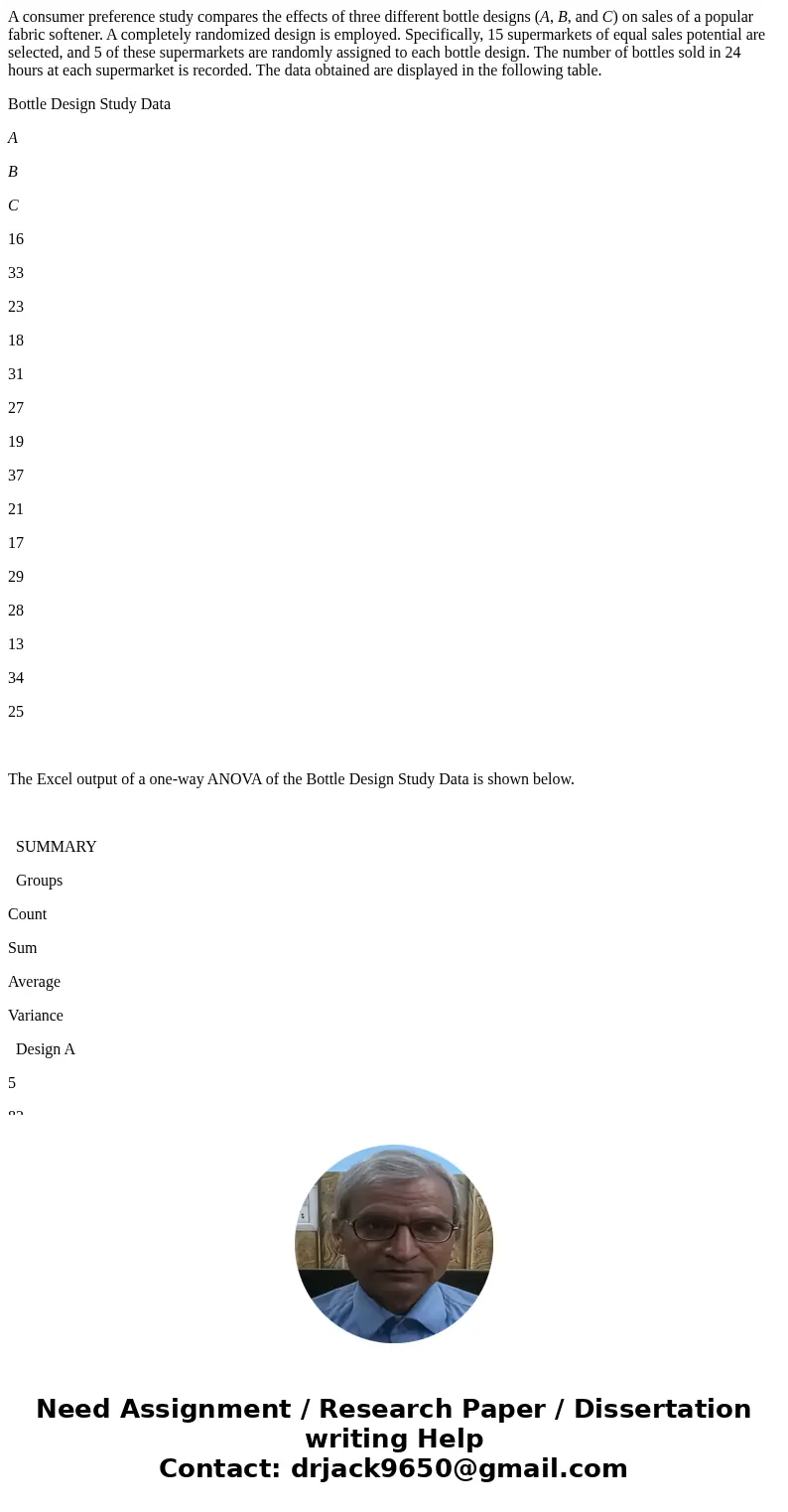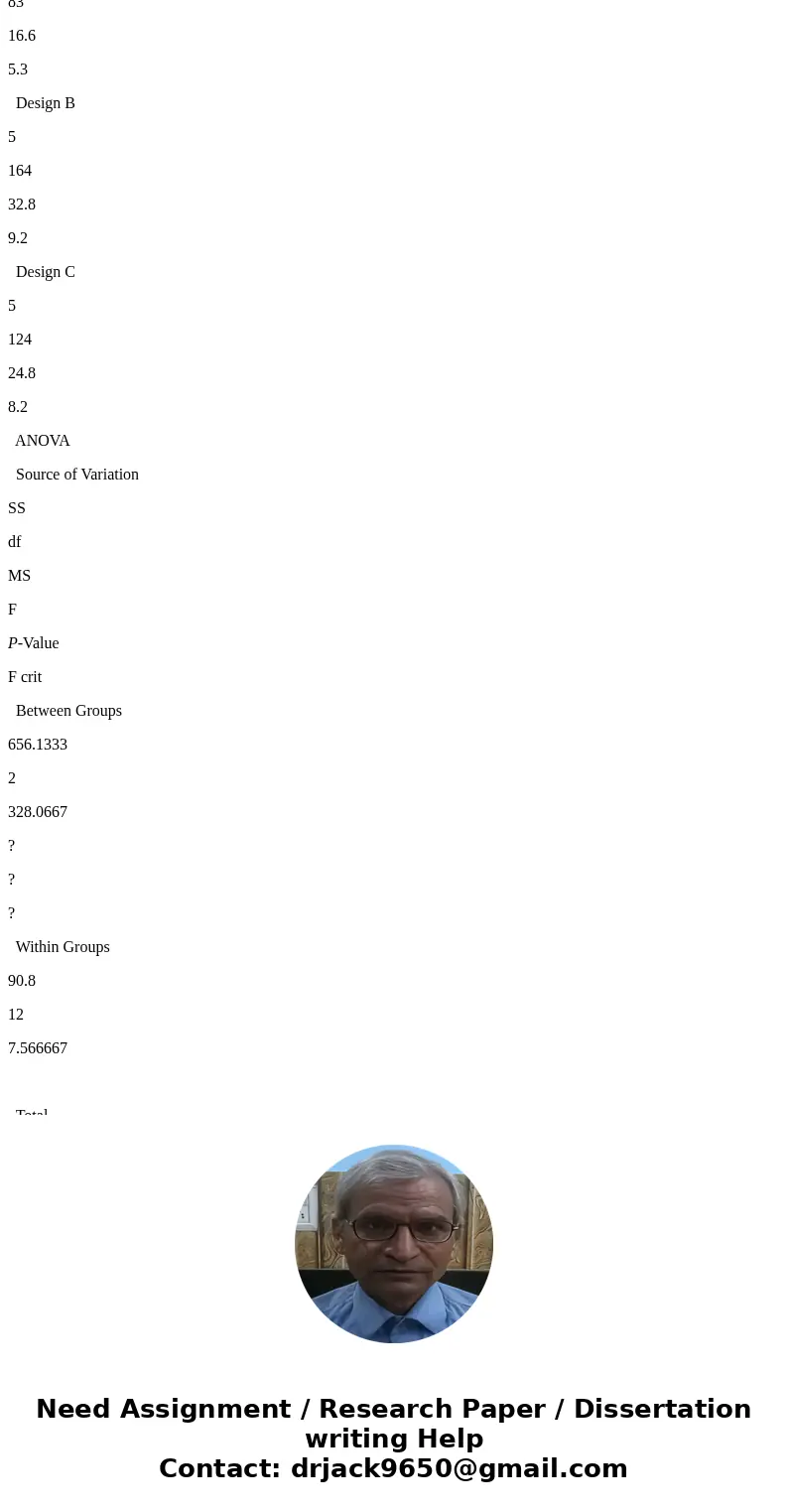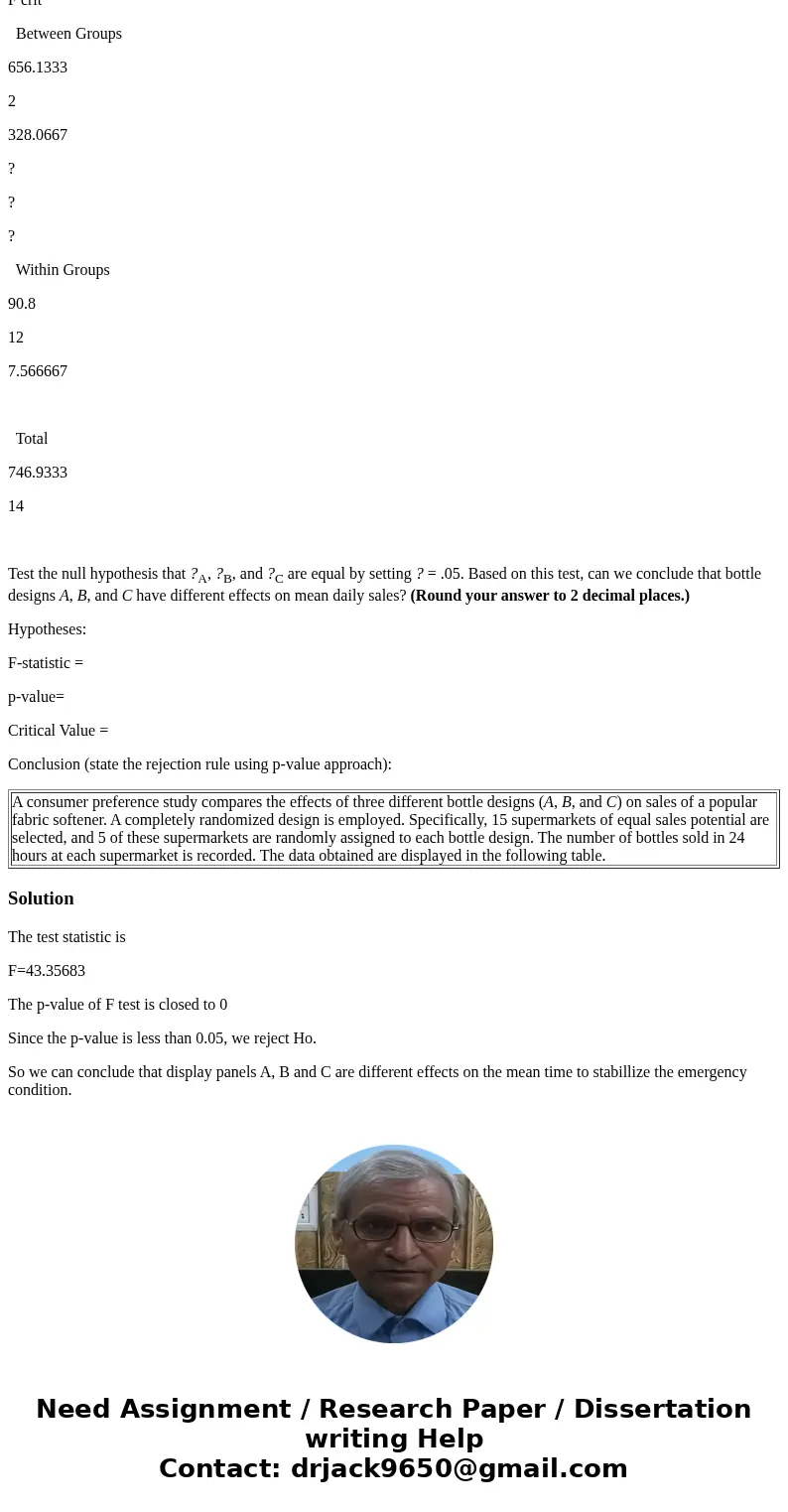A consumer preference study compares the effects of three di
A consumer preference study compares the effects of three different bottle designs (A, B, and C) on sales of a popular fabric softener. A completely randomized design is employed. Specifically, 15 supermarkets of equal sales potential are selected, and 5 of these supermarkets are randomly assigned to each bottle design. The number of bottles sold in 24 hours at each supermarket is recorded. The data obtained are displayed in the following table.
Bottle Design Study Data
A
B
C
16
33
23
18
31
27
19
37
21
17
29
28
13
34
25
The Excel output of a one-way ANOVA of the Bottle Design Study Data is shown below.
SUMMARY
Groups
Count
Sum
Average
Variance
Design A
5
83
16.6
5.3
Design B
5
164
32.8
9.2
Design C
5
124
24.8
8.2
ANOVA
Source of Variation
SS
df
MS
F
P-Value
F crit
Between Groups
656.1333
2
328.0667
?
?
?
Within Groups
90.8
12
7.566667
Total
746.9333
14
Test the null hypothesis that ?A, ?B, and ?C are equal by setting ? = .05. Based on this test, can we conclude that bottle designs A, B, and C have different effects on mean daily sales? (Round your answer to 2 decimal places.)
Hypotheses:
F-statistic =
p-value=
Critical Value =
Conclusion (state the rejection rule using p-value approach):
| A consumer preference study compares the effects of three different bottle designs (A, B, and C) on sales of a popular fabric softener. A completely randomized design is employed. Specifically, 15 supermarkets of equal sales potential are selected, and 5 of these supermarkets are randomly assigned to each bottle design. The number of bottles sold in 24 hours at each supermarket is recorded. The data obtained are displayed in the following table. |
Solution
The test statistic is
F=43.35683
The p-value of F test is closed to 0
Since the p-value is less than 0.05, we reject Ho.
So we can conclude that display panels A, B and C are different effects on the mean time to stabillize the emergency condition.



 Homework Sourse
Homework Sourse